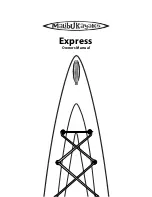
5.
Extinguish any other open flames aboard and see that all equipment
(e.g., engine, stove, cabin heater, radios, and lights - both
lanterns and electrical lights, etc.) which may generate heat or
sparks of any kind turned OFF...Turn off all switches for branch
circuits so that there are no live electrical circuits. MAIN SWITCH
should also be turned off AFTER engine is stopped (to avoid
alternator damage).
6.
If possible, crew members not involved in fueling should leave the
boat.
7.
An adequate fire extinguisher (USCG approved for Class B fires)
should be readily available in case of emergency.
8.
Remove fuel fitting. Be certain that you are putting fuel in the
fuel tank. Note the approximate amount required to fill the tank by
either looking at the fuel level gauge if one is in the tank.
9.
Be certain (double check) that you are taking on the appropriate
fuel, diesel not gasoline. Errors of this type do occur and will
result in serious engine damage if not immediately detected and
corrected.
10.
Sometimes if you are in an unfamiliar area you may want to first
take a sample of the fuel you plan to pump on board for a visual and
smell check to insure that it is diesel and not gasoline.
11.
Maintain contact between the nozzle of the fuel hose and the fill
pipe rim to prevent generation of static electricity sparks.
12.
Fill slowly to about 95% of capacity; do NOT overfill. (Allowance
must be made for thermal expansion of fuel without overflow.)
13.
Replace and secure fill fitting after fueling. Carefully clean any
spillage. Check fuel tank vents at stern for overflow. Check below
decks and in the bilge for fumes or leakage. If fumes or leakage
are present, adequately ventilate and clean areas completely BEFORE
PROCEEDING.
14.
Open all ports and hatches fully for ventilation.
15.
Do not fuel during electrical storms; avoid fueling at night or in
rough water, except in emergencies when extreme caution must be
exercised.
16.
Note that diesel fuel is flammable; handle it accordingly in a
cautious manner.
17.
Those Cape Dory owners with outboard engines should note that
perhaps the safest fueling practice, when possible, is to remove the
tank(s) from the boat before filling.
www.capedory.org
- 17 -
Содержание 270
Страница 1: ...CAPE DORY 270 Edited by Catherine Monaghan 2007 ...
Страница 48: ...www capedory org 48 ...
Страница 51: ...www capedory org 51 ...
Страница 71: ...www capedory org 71 ...
Страница 72: ...www capedory org 72 ...
Страница 73: ...www capedory org 73 ...
Страница 74: ...www capedory org 74 ...
Страница 75: ...www capedory org 75 ...
Страница 76: ...www capedory org 76 ...
Страница 77: ...www capedory org 77 ...
Страница 78: ...www capedory org 78 ...
Страница 79: ...www capedory org 79 ...
Страница 80: ...www capedory org 80 ...
Страница 81: ...www capedory org 81 ...
Страница 82: ...www capedory org 82 ...
Страница 83: ...www capedory org 83 ...
Страница 84: ...www capedory org 84 ...
Страница 85: ...www capedory org 85 ...
Страница 86: ...www capedory org 86 ...
Страница 87: ...www capedory org 87 ...
Страница 88: ...www capedory org 88 ...
Страница 89: ...www capedory org 89 ...
Страница 90: ...www capedory org 90 ...
Страница 91: ...www capedory org 91 ...
Страница 92: ...www capedory org 92 ...
Страница 93: ...www capedory org 93 ...
Страница 94: ...www capedory org 94 ...
















































